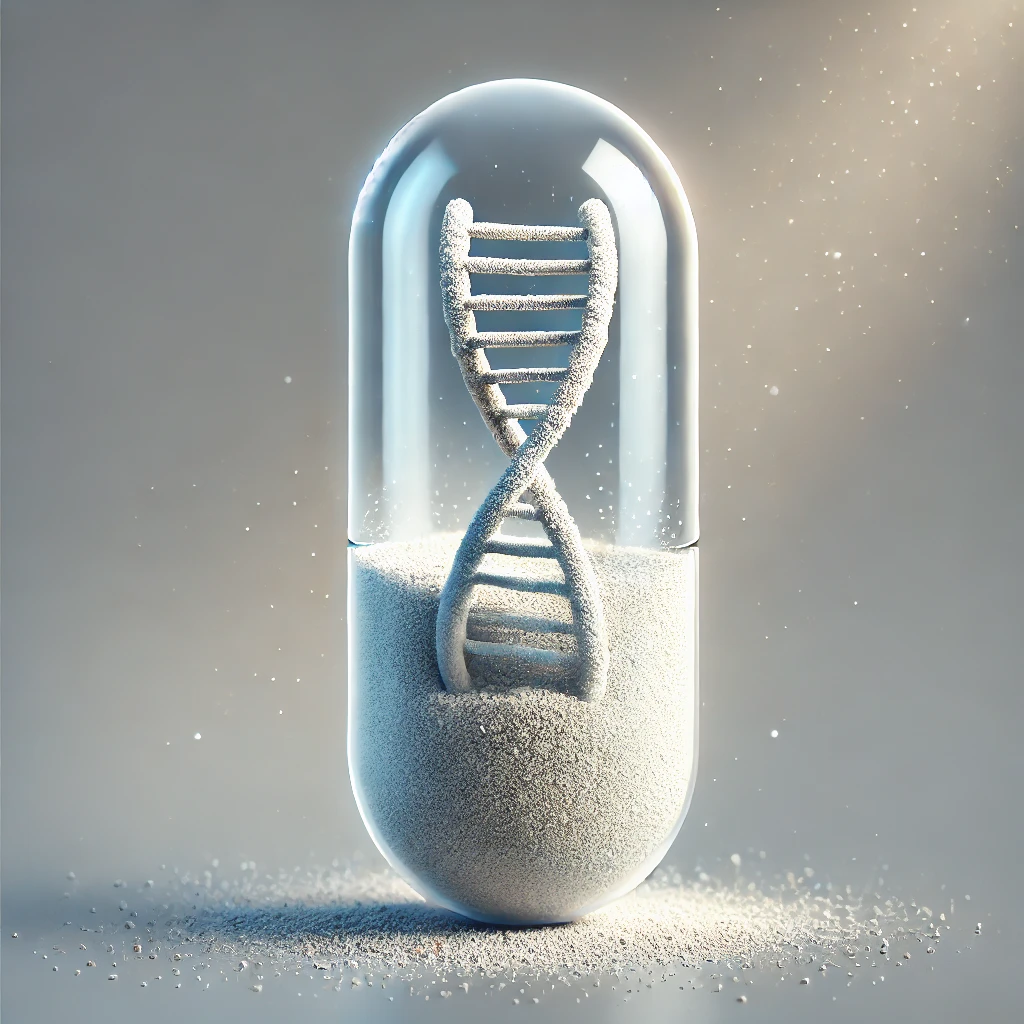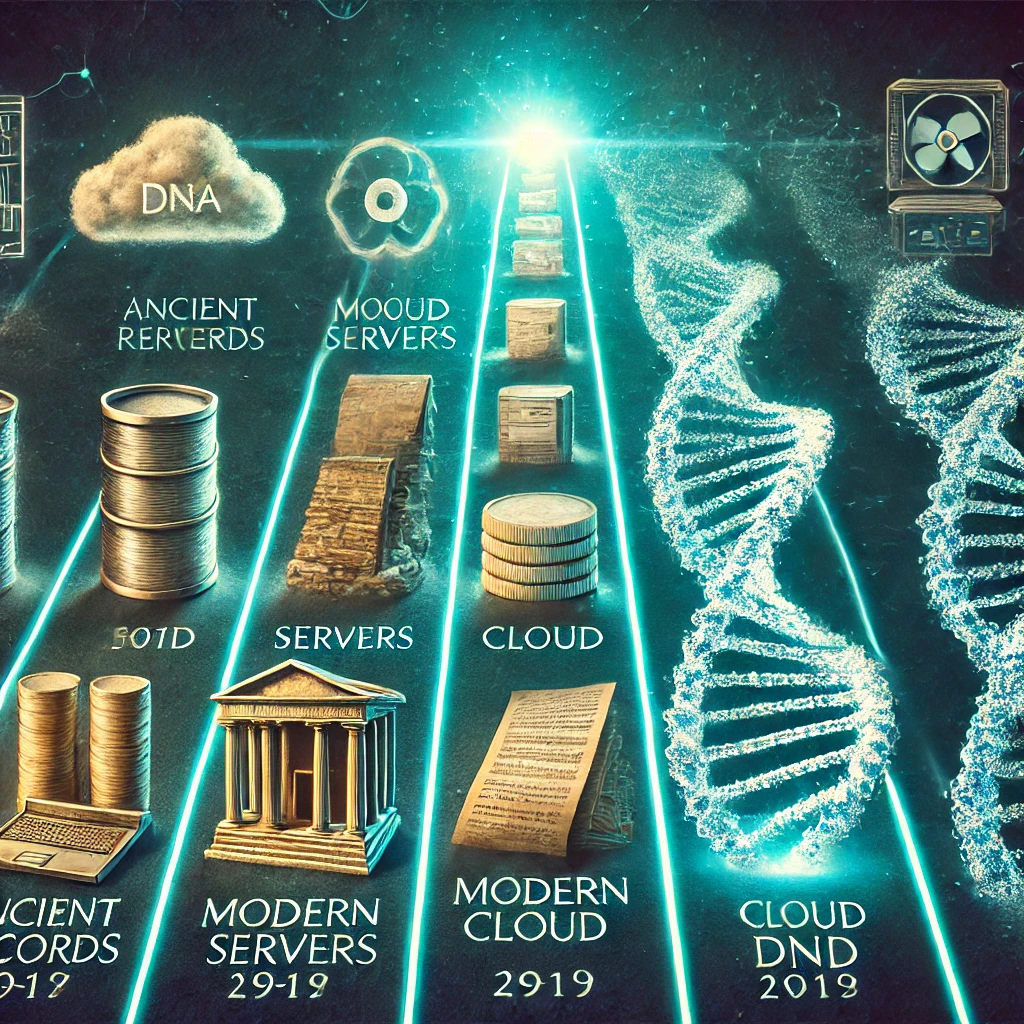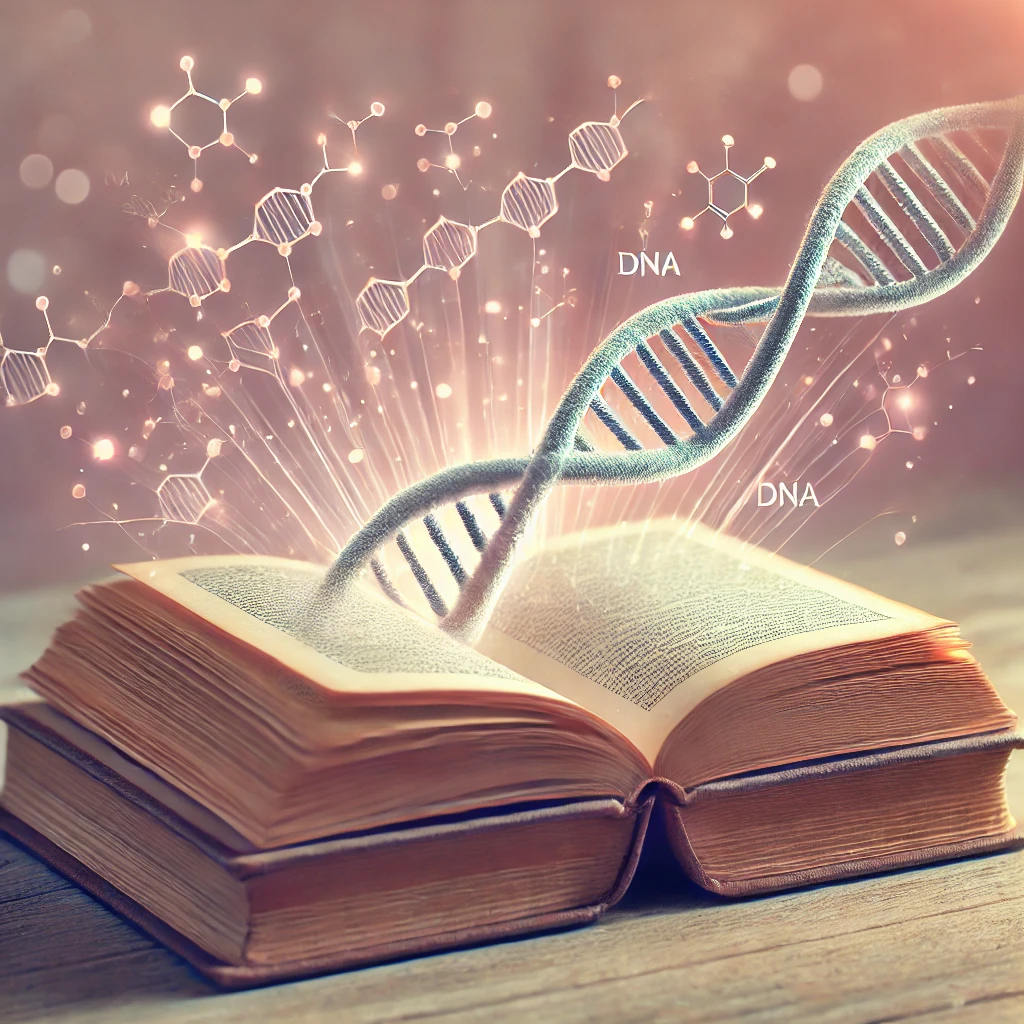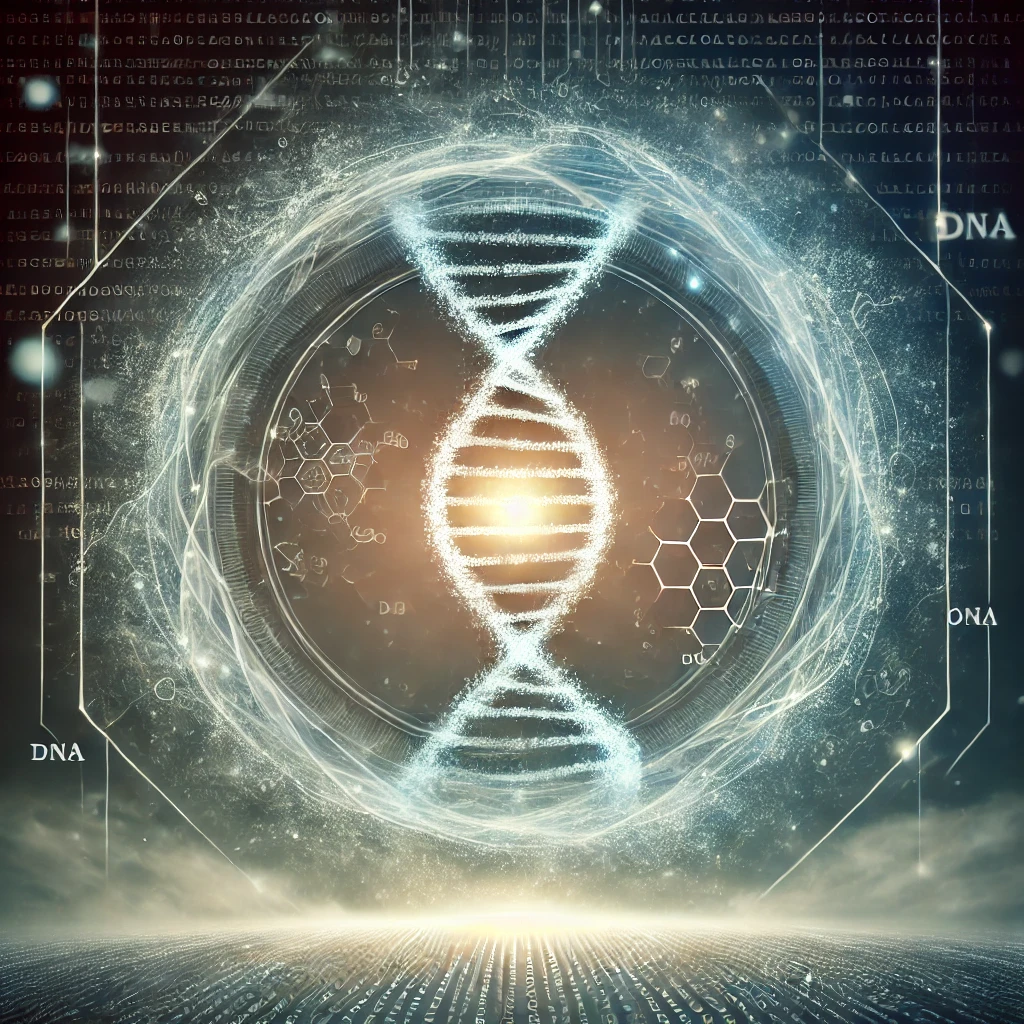DNA Storage is 1000 times more compact than solid state hard drive.

DNA storage represents a monumental advancement in data storage technology, boasting efficiency that is approximately 1,000 times greater than that of traditional solid-state chips. This extraordinary density is achieved by encoding digital information into the sequences of DNA nucleotides—adenine (A), thymine (T), cytosine (C), and guanine (G). While a solid-state drive can store several terabytes of data per kilogram, DNA has the potential to hold up to hundreds of petabytes in just a single gram. This immense capacity not only drastically reduces the physical space required for data centers but also enhances data longevity and minimizes energy consumption, as DNA does not require power to maintain its stored information. Additionally, DNA storage is highly durable, capable of preserving data for thousands of years under the right conditions. As research and development continue to advance, DNA storage could revolutionize the way we archive and manage the ever-growing volumes of digital information, offering a sustainable and highly efficient alternative to conventional storage technologies.

Imagine holding a tiny vial in your hand, so small that it fits easily in your pocket. Inside this vial is something extraordinary—a book written not on paper or displayed on a screen, but in the very building blocks of life itself: DNA. This might sound like something out of a science fiction story, but it’s becoming a reality. In this essay, we will explore the fascinating world of DNA data storage, how entire books can be written in DNA, the advantages and challenges of this technology, and what the future might hold for this innovative way of preserving information.
DNA Storage vs Cloud storage
When data is written in DNA, it can be preserved for thousands of years without requiring any ongoing energy, unlike cloud storage which depends on continuous power to maintain servers and data centers. DNA’s remarkable stability ensures that the information remains intact over millennia, providing a sustainable and energy-efficient solution for long-term data preservation. This means that vital information can be archived securely without the constant energy consumption and infrastructure needed to keep digital data accessible in the cloud. As a result, DNA storage offers an environmentally friendly and enduring alternative for safeguarding our most important data for future generations.
What is DNA?

DNA, or deoxyribonucleic acid, is a molecule that contains the instructions needed for the growth, development, functioning, and reproduction of all living organisms. It is often described as the blueprint of life because it holds the genetic information that makes each organism unique. DNA is made up of four types of building blocks called nucleotides, which are represented by the letters A (adenine), T (thymine), C (cytosine), and G (guanine). The sequence of these letters determines the genetic instructions.
Understanding DNA Data Storage
DNA data storage is a cutting-edge technology that uses DNA molecules to store digital information. Unlike traditional storage methods like hard drives or flash drives, which use electrical charges or magnetic fields to store data, DNA stores information in the sequence of its nucleotides. Here’s a simple way to understand how it works:
1. Encoding Information: Just as computers use binary code (a series of 0s and 1s) to represent data, DNA uses sequences of A, T, C, and G to encode information. To store a book in DNA, the text is first converted into binary code and then mapped to these four nucleotides.
2. Synthesis: Once the information is encoded, scientists use chemical processes to create synthetic DNA strands that follow the specific sequence required to represent the data.
3. Storage: The synthesized DNA can be stored in small, durable containers. DNA is incredibly dense, meaning a vast amount of data can be stored in a very small space. For example, one gram of DNA can theoretically hold about 215 petabytes (215 million gigabytes) of data.
4. Decoding: To read the stored information, the DNA is sequenced, which means determining the order of the nucleotides. The sequence is then converted back into binary code and finally into the original text of the book.
The Book Written in DNA

Recently, a company offered a unique product: an entire book written in DNA for $60. This innovative idea showcases the potential of DNA data storage in preserving information in a compact and long-lasting format. Here’s how such a product might work:
• Choosing the Book: A book is selected, and its text is digitized into binary code.
• Encoding the Text: The binary code is translated into a DNA sequence using a specific algorithm that maps the binary data to the four nucleotides.
• Synthesizing DNA: The encoded DNA sequence is chemically synthesized, creating a strand of DNA that contains the information of the book.
• Packaging: The synthesized DNA is stored in a small vial or capsule, along with instructions on how to decode and read the information.
• Purchasing: Customers can buy this vial for $60, giving them a unique and futuristic way to own a copy of the book.
This method of storing books is not only a novel idea but also a step towards revolutionizing how we preserve and access information in the future.
Advantages of DNA Data Storage

DNA data storage offers several significant benefits over traditional storage methods:
1. High Storage Density: DNA is incredibly dense, allowing for massive amounts of data to be stored in a minuscule space. This means that entire libraries could potentially be stored in a few grams of DNA.
2. Longevity: DNA is remarkably stable and can last for thousands of years if kept in the right conditions. Unlike electronic storage devices that can degrade or become obsolete, DNA remains a reliable medium for long-term data preservation.
3. Energy Efficiency: Traditional data centers require constant energy to maintain and cool storage devices. DNA storage, on the other hand, does not need energy to preserve the data, making it an environmentally friendly option.
4. Portability: DNA is lightweight and easy to transport. A small vial containing DNA can hold vast amounts of information, making it an ideal solution for data storage in limited spaces.
5. Biocompatibility: DNA can be easily integrated into biological systems, opening up possibilities for storing data within living organisms or biological research.
Challenges of DNA Data Storage

Despite its promising advantages, DNA data storage faces several challenges that need to be addressed:
1. Cost: Currently, synthesizing and sequencing DNA is expensive. The high cost makes it impractical for widespread use, especially for everyday data storage needs.
2. Speed: Writing data to DNA and reading it back is a slow process compared to electronic storage methods. This makes DNA storage unsuitable for applications that require quick access to data.
3. Error Rates: Errors can occur during the synthesis and sequencing of DNA, leading to data corruption. Robust error-correction methods are necessary to ensure the accuracy and reliability of stored information.
4. Scalability: While DNA can store vast amounts of data, the technology needs to scale efficiently to handle large volumes of information without prohibitive costs.
5. Environmental Sensitivity: DNA must be stored under specific conditions to prevent degradation. Maintaining these conditions can add to the complexity and cost of DNA data storage.
The Process of Writing a Book in DNA

To understand how an entire book can be written in DNA, let’s break down the process step by step:
1. Digitization: The first step involves converting the book’s text into a digital format. This means translating the words and characters into binary code, a series of 0s and 1s that computers use to represent information.
2. Encoding: The binary data is then mapped to the four DNA nucleotides (A, T, C, G). Various encoding schemes can be used to ensure that the DNA sequence accurately represents the binary data without errors.
3. DNA Synthesis: Using specialized machines, scientists synthesize DNA strands that follow the encoded sequence. This involves chemically assembling the DNA molecules to match the desired pattern.
4. Storage: The synthesized DNA is stored in a secure container, such as a small vial. This container protects the DNA from environmental factors that could cause degradation.
5. Decoding and Reading: To read the book, the DNA is sequenced to determine the order of nucleotides. The sequence is then translated back into binary code and finally converted into readable text.
Real-World Applications and Implications
Watch Video
Click below

The ability to write books and other data in DNA opens up a wide range of applications and implications for various fields:
1. Data Archiving: DNA storage provides a solution for long-term data archiving, preserving important information for future generations without the risk of technological obsolescence.
2. Biotechnology: Integrating data storage with biological systems could lead to new advancements in biotechnology, such as embedding information within living organisms for research and medical purposes.
3. Space Exploration: DNA’s high storage density and longevity make it an ideal candidate for storing data on long-term space missions, where space and resources are limited.
4. Cultural Preservation: Storing books, artworks, and historical records in DNA ensures that human culture and knowledge are preserved accurately over millennia.
5. Personal Data Storage: Individuals could use DNA storage for personal data, such as family histories, personal writings, and memories, creating a unique and enduring digital legacy.
The Future of DNA Data Storage
As technology continues to advance, the potential of DNA data storage becomes increasingly attainable. Researchers are working to reduce the costs of DNA synthesis and sequencing, making the technology more accessible. Improvements in encoding algorithms and error-correction methods are enhancing the reliability and speed of DNA data storage systems.
In the future, we might see DNA data storage integrated into everyday devices, offering a new way to store and access information. Imagine having a personal DNA storage device that can hold all your digital data in a tiny, portable format. Additionally, advancements in biotechnology could lead to hybrid systems that combine electronic and biological storage methods, harnessing the strengths of both.
Ethical and Environmental Considerations
While DNA data storage offers many benefits, it also raises important ethical and environmental questions. The synthesis of DNA for data storage involves chemical processes that could have environmental impacts if not managed responsibly. Additionally, there are ethical considerations regarding the use of biological materials for non-biological purposes.
Ensuring that DNA data storage technologies are developed and implemented sustainably and ethically is crucial. Regulations and guidelines will need to be established to address these concerns, balancing innovation with responsibility.
Writing an entire book in DNA is a remarkable achievement that highlights the incredible potential of DNA data storage. This technology promises to revolutionize how we store and preserve information, offering unparalleled density, longevity, and efficiency. While there are challenges to overcome, the ongoing advancements in DNA synthesis and sequencing are paving the way for a future where DNA becomes a standard medium for data storage.
As we continue to explore the intersection of biology and technology, DNA data storage stands out as a testament to human ingenuity and our quest to push the boundaries of what is possible. Whether used for preserving literary works, safeguarding historical records, or storing personal memories, DNA offers a unique and enduring solution for the information age. Embracing this innovation could lead to a new era of data preservation, ensuring that our knowledge and culture are preserved for generations to come.
